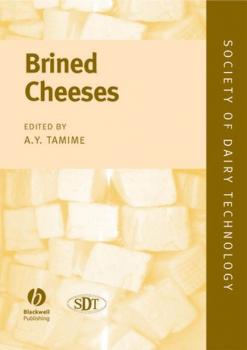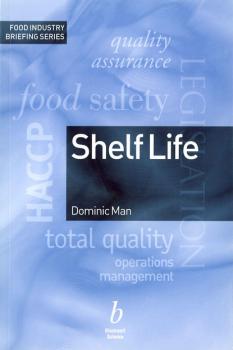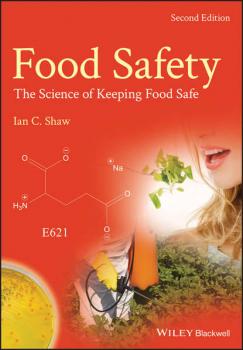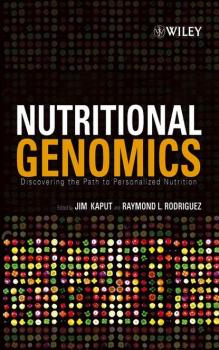ТОП просматриваемых книг сайта:
ЛИТМИР - LITMIR.BIZ - Электронная библиотека
Скачивание или чтение онлайн электронных книг.Аннотация
The Society of Dairy Technology (SDT) has joined with Blackwell Publishing to produce a series of technical dairy-related handbooks providing an invaluable resource for all those involved in the dairy industry; from practitioners to technologists working in both traditional and modern larged-scale dairy operations. Brined cheeses such as feta and halloumi have seen a large increase in popularity and as a result, increasing economic value. Over the past two decades the dairy industry has carried out much research into starter cultures alongside technological developments, widening the range of brined cheese products available to consumers worldwide. The third title in the SDT series, Brined Cheeses gathers research on this important range of cheese varieties from around the world into a single volume, offering the reader: A practically-oriented and user-friendly guide Key commercially important information Coverage of all the major stages of manufacture Background to each variety Review of how different varieties are utilised in different countries Edited by Adnan Tamime, with contributions from international authors and full of core commercially useful information for the dairy industry, this book is an essential title for dairy scientists, dairy technologists and nutritionists worldwide.
Аннотация
Unlike other human senses, the exact mechanisms that lead to our perception of flavor have not yet been elucidated. It is recognised that the process involves a wide range of stimuli, which are thought likely to interact in a complex way, but, since the chemical compounds and physical structures that activate the flavor sensors change as the food is eaten, measurements of the changes in stimuli with time are essential to an understanding of the relationship between stimuli and perception. It is clear that we need to consider the whole process – the release of flavor chemicals in the mouth, the transport processes to the receptors, the specificity and characteristics of the receptors, the transduction mechanisms and the subsequent processing of signals locally and at higher centres in the brain. This book provides a state-of-the-art review of our current understanding of the key stages of flavor perception for those working in the flavor field, whether in the academic or industrial sector. In particular, it is directed at food scientists and technologists, ingredients suppliers and sensory scientists.
Аннотация
The crucial subject of the shelf life of food products affects the manufacture, processing, distribution, sale and consumption of all foods. It is a hot topic that is on the mind of every 21st Century consumer and cannot be ignored. Following the clear and concise style of the Blackwell Food Industry Briefing Series, Shelf Life allows the reader to dip in and discover or re-discover how to manage shelf life of foods looking at definitions, regulations, responsibilities, and the important task of determining the shelf life of food products. Separated into three sections, Shelf Life offers guidance on and answers to questions every person involved with food products should ask. It considers the mechanisms of food deterioration and the factors that can influence shelf life of foods and offers examples of how to determine the length of shelf life for different products. Dominic Man writes as a recognised expert with proven experience in this field, and enables any reader to tackle day to day problems related to shelf life of foods. Discussing the close relationship between food safety and shelf life this book is an essential resource for all food industry professionals and scholars who need to gain an overview of this extremely important subject. The book will appeal to senior students of food science and technology and related disciplines, and to practising food professionals such as product developers and quality assurance technologists. Concise, easy-to-use, quick reference book. Enable user to gain a quick working knowledge of Shelf Life. Written by an expert in the field with proven experience. Part of the exciting new series 'Food Industry Briefing'.
Аннотация
Food safety is a multi-faceted subject, using microbiology, chemistry, standards and regulations, and risk management to address issues involving bacterial pathogens, chemical contaminants, natural toxicants, additive safety, allergens, and more. This revised edition has been updated with the latest information on food safety. It addresses all the topics pertinent to a full understanding of keeping the food we eat safe. Each chapter of Food Safety: The Science of Keeping Food Safe, Second Edition proceeds from introductory concepts and builds towards a sophisticated treatment of the topic, allowing the reader to take what knowledge is required for understanding food safety at a wide range of levels. Illustrated with photographs and examples throughout, this new edition also boasts 4 new chapters covering radioactivity in food; food terrorism; food authenticity; and food supplements. • This second edition has been revised and updated throughout to include the latest topics in this fast-moving field • Includes 4 brand new chapters on radioactivity in food, food terrorism, food authenticity, and food supplements • The most readable and user-friendly food safety book for students, scientists, regulators, and general readers Food Safety is the ideal starting point for students and non-specialists seeking to learn about food safety issues, and an enjoyable and stylish read for those who already have an academic or professional background in the area.
Аннотация
The definitive guide to the basic principles and latest advances in Nutritional Genomics Though still in its infancy, nutritional genomics, or «nutrigenomics,» has revealed much about the complex interactions between diet and genes. But it is in its potential applications that nutrigenomics promises to revolutionize the ways we manage human health and combat disease in the years ahead. Great progress already has been made in modeling «personalized» nutrition for optimal health and longevity as well as in genotype-based dietary interventions for the prevention, mitigation, or possible cure of a variety of chronic diseases and some types of cancer. Topics covered include: * Nutrients and gene expression * The role of metabolomics in individualized health * Molecular mechanisms of longevity regulation and calorie restriction * Green tea polyphenols and soy peptides in cancer prevention * Maternal nutrition and fetal gene expression * Genetic susceptibility to heterocyclic amines from cooked foods * Bioinformatics and biocomputation in nutrigenomics * The pursuit of optimal diets Written by an all-star team of experts from around the globe, this volume provides an integrated overview of the cutting-edge field of nutritional genomics. The authors and editors lead an in-depth discussion of the fundamental principles and scientific methodologies that serve as the foundation for nutritional genomics and explore important recent advances in an array of related disciplines. Each self-contained chapter builds upon its predecessor, leading the reader seamlessly from basic principles to more complex scientific findings and experimental designs. Scientific chapters are carefully balanced with those addressing the social, ethical, regulatory, and commercial implications of nutrigenomics.
Аннотация
One of the recent developments in regard to food safety is the legal change that consumers have a right to be sold safe food and that the primary producer is now part of the process which must guarantee the delivery of safe products
Аннотация
Meat Preservation is written as an integrated and all-encompassing text that includes historical aspects and trends, discussion of basic background information, the evaluation and status of techniques and procedures, and treatments of potential future developments. The latter are particularly important because based on consumer desires, there is a definite trend developing to produce and market meat and meat products that have been subjected to a lesser degree of preservation, yet appear to be fresh and more healthful. Today, there is an intense interest to produce the safest meat possible. The overriding theme of Meat Preservation, provides the understanding of the science of meat and discussion for using known technologies to achieve the goal of safe meat of high quality. Prof. Cassens has gathered information on the preservation of meat from many sources, and organized the material of this important subject in a highly readable form. Proper preservation of meat is important to prevent economic loss due to spoilage, and to prevent the transmission of foodborne illness. To make the text flow smoothly, references are not cited directly, but are given as general sources. Meat Preservation will be useful for undergraduates, and also valuable to workers and researchers in meat and animal science, food scientists and technologists, and anyone interested in the preservation of meat and meat products.
Аннотация
This comprehensive reference consolidates current information on the antioxidant properties of wheat, their beneficial effects, the mechanisms involved, factors affecting availability/bioavailability, and the methods used to measure them. It discusses antioxidant properties of wheat grains and fractions and their phytochemical compositions and covers the effects of genotype, growing conditions, post-harvest treatment, storage, and food formulation and processing on availability/bioavailability. Wheat Antioxidants will help cereal chemists, food technologists, food processors, nutritionists, and others maximize the health benefits of wheat-based foods.
Аннотация
Plant Biotechnology: Current and Future Uses of Genetically Modified Crops covers in detail the development, use and regulation of GM crops. Split into three sections, Part 1 introduces GM crops and describes the GM crops that are used commercially. Part 2 looks at new developments and methodologies in areas including potential applications of GM crops for the production of vaccines, enhanced nutritional value of GM food, and engineering resistance to fungal pathogens. Part 3 concludes by considering the key issues of safety and legislation, including allergenicity, environmental impacts, risk assessment and labelling. Key features: Covers the topic in depth and addresses key subject areas Takes a broad view of the current situation in different countries Examines the commercial application of plant biotechnology in the USA and China Covers two major areas of public concern: allergenicity and gene flow Covers new developments in plant research, safety and legislation aspects This book is essential reading for postgraduates and researchers in plant biotechnology and related sciences in Departments of Plant Science, Biotechnology, Bioscience, Environmental Science, Food Biosciences and Chemistry. It is also of interest for professionals working in the plant biotechnology industry or government professionals working in environmental policy.
Аннотация
The successful investigation of the hydrogeology of an area depends on the collection of reliable field data. Field Hydrogeology, Third Edition follows a systematic approach to completing a hydrogeological study and explains how to decide on the measurements that are needed and on the instruments and techniques required. Measurements that are needed and on the instruments and techniques required. Measurements of groundwater levels, rainfall and evaporation spring and stream flows and the use of ground water tracer techniques are covered. There is a great deal of practical information on all aspects of planning and completion of field investigation and on the interpretation of field investigation and on the interpretation of field evidence. Advice on safety is also included. This third edition has been fully revised and updated to bring the book into line with developments in environmental regulations. The order of the chapters reflects the structure of a hydrogeological project and the development of a conceptual model up to completion of a report. The focus is on current practical applications of hydrogeological investigations using new case histories and a new chapter on specialist techniques has been included. Handy pocket-size for field research Features case histories Focuses on practical applications Contains a new chapter on groundwater investigations Field Hydrogeology, Third Edition is an invaluable resource for undergraduate and postgraduate students of geology, hydrogeology, environmental sciences and engineering, as well as a wide range of professionals working in the water resources and environmental protection fields.










